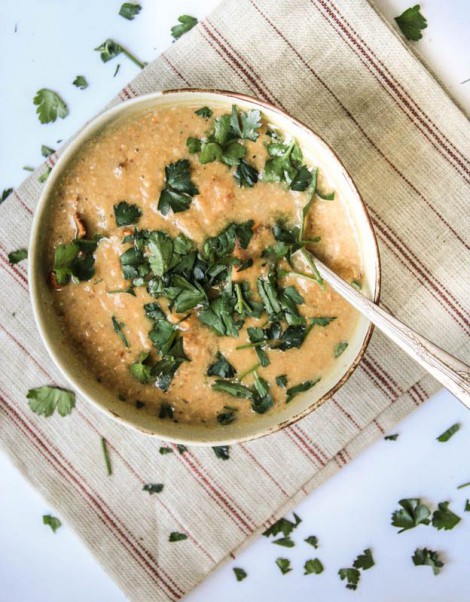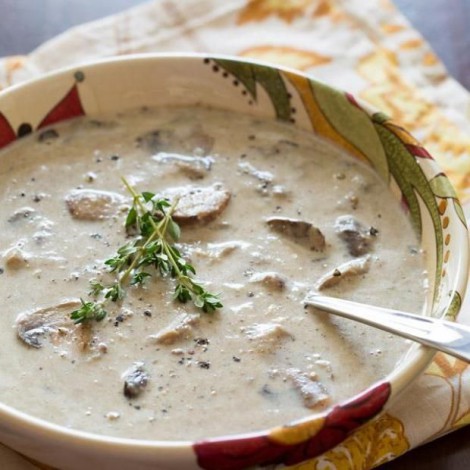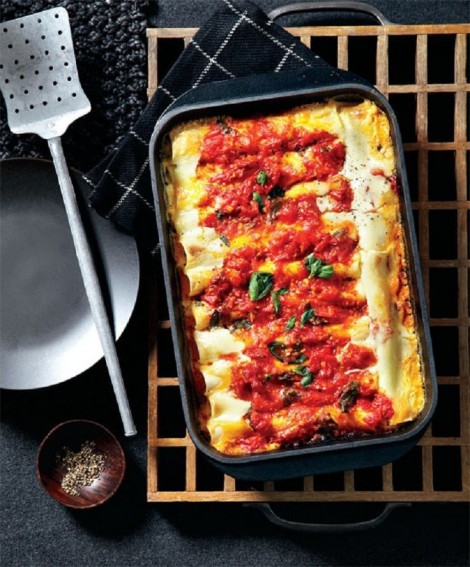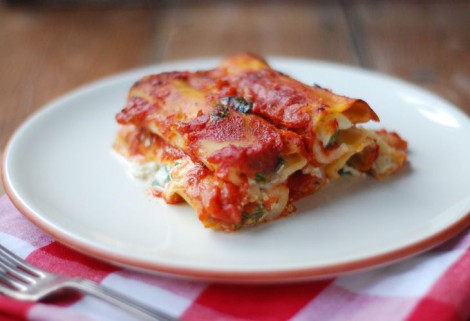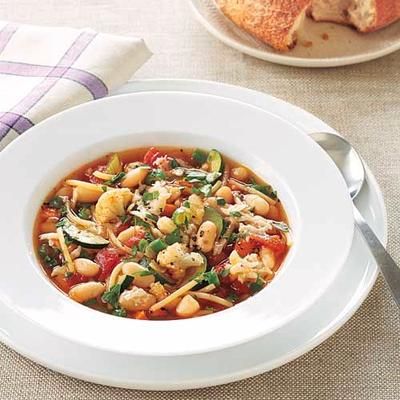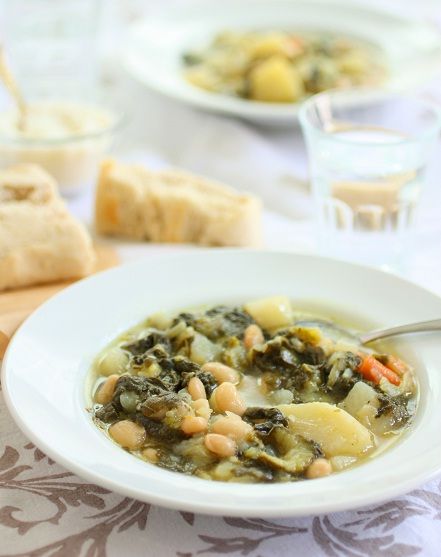Creamy soups are around for a long time. They were invented based on the famous “balsamella” sauce that is also known as “béchamel”.
Originally, the well-known sauces “balsamella” (or “besciamella” and alternatively “salsa colla” or “salsa colletta”) were used in the Middle Ages in Tuscany in Italy. The sauce was definitely known to the chefs of Catherina de’ Medici in the 1530s. Food historians suggest that it was imported to France by the chefs of Marie de’ Medici, the second wife of King Henry IV. Thus, the flour-based butter & milk sauce was added to the French cuisine. The original name “balsamella” was then translated as “béchamel”, which later became famous all over the world. Also, skilful cooks and housewives turned the sauce into different creamy soups by diluting it and adding different vegetables to it, including mushrooms.
In the United States, the creamy mushroom soup appeared as a canned product in 1934 by the Campbell Soup Company. Ever since, it is one of the most popular canned soups in America.
My favourite creamy mushroom soup is easy to make and it only uses butter, not flour. The below recipe from Channel 4 is so delicious that I even made it for a Christmas dinner once. I made some slight alterations to the original recipe based on the fact that some ingredients were just not available in my area. I think it is perfect and I would recommend making the soup based on this slightly modified recipe. It is perfect for occasions, too as it easily lends itself for professional presentation!
Ingredients:
- 25 gram butter
- 1 large onion (finely chopped)
- 400 gram large, flat, brown-skinned mushrooms (thinly sliced)
- 600 ml vegetable stock (preferably home-made or if packaged, use “organic”)
- 500 ml milk
- Juice of one lemon
- Few dollops of single cream (to garnish)
- Handful of pine nuts (toasted and to garnish)
- Fresh chives (snipped to garnish)
Preparation method:
- Melt the butter in a saucepan and add the onion. Sweat it on a low heat until softened. Avoid browning.
- Add the mushrooms to the saucepan and cook it for a few minutes so that the mushrooms wilt.
- Stir in the stock and the milk and bring the soup to the boil. Reduce the heat and simmer for 30 minutes.
- Allow the soup to cool. Once it is cool, transfer it into a blender and liquidise it. Season well, add the lemon juice and blend it briefly once again.
- Transfer to soup bowls and garnish with fresh cream, toasted pine nuts and fresh chives.
Bon appetite!

